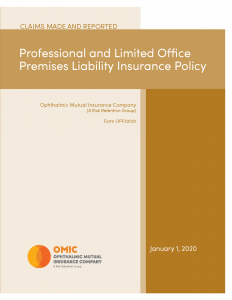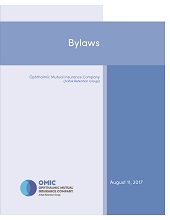Ophthalmic surgical checklist
AAO, OMIC, ASCRS, ASORN, and OOSS Ophthalmic Surgical Checklist
The American Academy of Ophthalmology and OMIC asked key ophthalmic societies to join them in developing an ophthalmic-specific surgical checklist. We would like to thank the American Society for Cataract and Refractive Surgery (ASCRS), the American Association of Ophthalmic Registered Nurses (ASORN), and the Outpatient Ophthalmic Surgery Society, for their assistance in producing this Ophthalmic Surgery Checklist.
This sample ophthalmic surgical checklist was designed to meet the needs of patients having many kinds of procedures. Please make any changes necessary to best address the type of patients, procedures, anesthesia, and facility you have. For example, ASCs whose only procedures are cataract surgery with topical anesthesia may not need many of the listed elements. Check with the physicians, anesthesia providers, nurses, and facility administrators to determine which elements are required under state licensing rules or by accreditation organizations.
Click on the name of the document or the “Download” button to access the checklist.
Removal of abnormal cells from surface of eye
Removal of abnormal cells from surface of eye
This consent form can be used for OSSN or CIN excision. Here is the first paragraph. Click on “download” to get the form.
You have abnormal cells on the surface of your eye. Cells grow on the conjunctiva. The conjunctiva is the clear tissue that covers the white part of your eye. These cells can become abnormal or turn into cancer cells. There are two medical terms for these abnormal cells. Ophthalmologists call them OSSN (ocular surface squamous neoplasia) or CIN (conjunctival intraepithelial neoplasia). When the cells become abnormal or turn into cancer, they need to be removed.
Kamra inlay
Click “download” to access the consent form for the Kamra inlay. The consent form is for on-label use of the Kamra inlay. It was approved for a very narrow range of indications.
Remove the two sentences in [yellow] if you are using the femtosecond laser to create a pocket.
Policy Forms and Updates
The policy Terms and Conditions (booklet and updates, if any) in place on the effective date of the Policy Period listed on your policy Declarations are the policy Terms and Conditions applicable to that Policy Period. However, if OMIC adopts any revisions that broaden coverage without payment of additional premium, the broadened coverage will automatically apply on the date OMIC authorizes the change.
2020 Policy Booklet
1/1/2020 Policy. Click on the policy booklet image to download a PDF copy of the policy effective as of January 1, 2020 – Form OPF20001. Kansas ophthalmologists, please click here for a policy with Kansas-specific notice.
The 1/1/2020 Policy was modified effective 1/1/2020, 3/1/2021, 1/1/2022, and 5/21/2022. Modifications may be viewed here.
Bylaws
8/11/2017 Bylaws
8/11/2017 Bylaws. Click on the Bylaws booklet image to download a PDF copy of the Bylaws in effect as of August 11, 2017, with the 6/7/2018 and 2/9/2019 Bylaws amendments.








